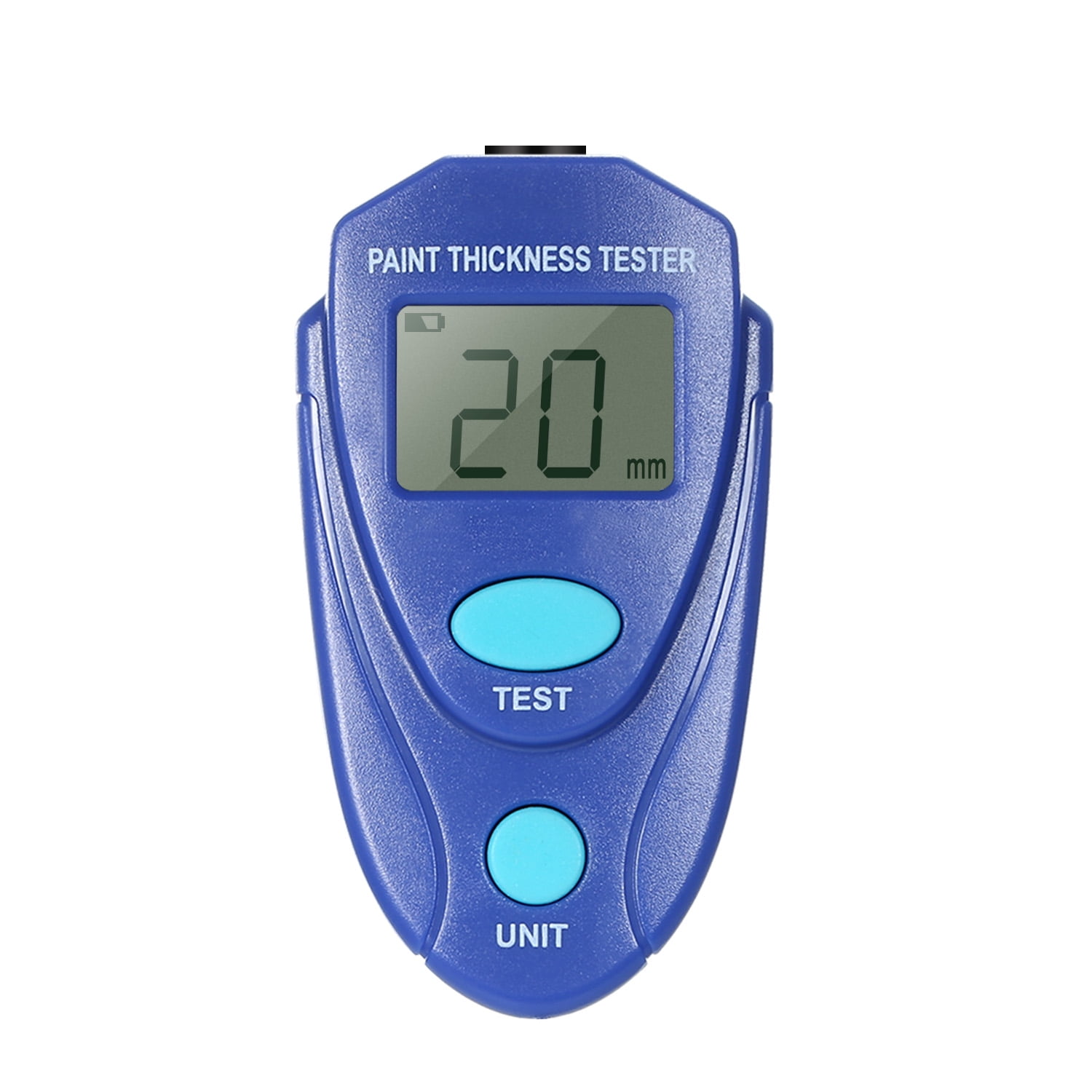

The probe of the instrument contains an ultrasonic transducer that sends a pulse through the coating. Some simplify the task of measuring by switching automatically from one principle of operation to the other, depending upon the substrate.Īn ultrasonic technique is used when measuring the thickness of paint over non-metal substrates such as plastic and fiberglass. It is more likely to find gages that incorporate BOTH magnetic and eddy current principles into one unit. It is relatively uncommon to find instruments that operate only with the eddy current principle in this industry. They also use a constant pressure probe and display results on an LCD with options to print stored measurement results. These eddy currents create their own opposing electromagnetic field that can be sensed by a second, adjacent coil.Įddy current (non-ferrous) coating thickness gages look and operate like electronic magnetic gages. When the instrument’s probe is brought near a metal (conductive) surface, a coil within the probe generates an alternating magnetic field that sets up eddy currents on the metal’s surface. Paint thickness over all other metals such as aluminum is measured using an eddy current technique. While most have basic operation, some have options to store measurement results, perform instant analysis of readings, and output results to a printer or computer for further examination. Readings are shown on a liquid crystal display (LCD). They use a constant pressure probe to provide consistent readings that are not influenced by different operators. Their use by detailers is limited and the accuracy is typically ±5%.Įlectronic magnetic gages are much more popular in the detailing industry. Low cost magnetic pull-off gages provide coarse measurements useful for detecting bondo or other fillers beneath the paint. By measuring the force required to pull the magnet off the coated surface, a thickness measurement can be determined. Mechanical gages use a permanent magnet, a calibrated spring, and a graduated scale. Since steel is magnetic, paint thickness over steel is measured with magnetic (ferrous) gages employing mechanical or electronic operation. These instruments use magnetic, eddy current, or ultrasonic measuring techniques. Three types are available and selection depends upon the type of coating, the material being painted, and the size and shape of the part. Paint thickness over exterior automotive materials is best measured with hand-held, electronic instruments. Measurement Principles for Paint/Coating Thickness Gauges The most common used today is a clear coat system in which a thin layer of color is applied, followed by multiple layers of clear non-pigmented paint. Automotive manufacturers typically use one of two main types of paint systems in their vehicles. This polishing process is often referred to as finessing.Įxtensive paint problems may require the use of several sanding and buffing steps to bring the paint back closer to its original beauty. When rejuvenation is required, detailers often polish the top clear coat layer of automotive paints to remove surface damage such as fine scratches, scuffs, swirl marks, oxidation, stains, paint overspray, tar, tree sap, acid rain, or water spots. Simple washing and waxing will not remove many types of surface paint damage a rejuvenation step (polishing with an orbital or a more effective high speed polisher) is added before the waxing step. Protection refers to the maintenance processes such as waxing that are used to keep the vehicle looking new for as long as possible after detailing. The extent of rejuvenation is dependent on the customer’s expectations.

Rejuvenation refers to the processes used to return a vehicle to its original showroom condition.
CLEAR COAT DEPTH GAUGE FULL
The primary purpose for paint detailing is to retain the appearance of newer vehicles or to revitalize older neglected vehiclesĬleaning is a preparatory step intended to remove dirt, dust, and other loose contaminants in order to allow full inspection of current paint conditions. Car detailing as it relates to paint thickness measurement is the systematic cleaning, rejuvenating, and protecting of the exterior painted surfaces of a vehicle. The most basic detail options include an exterior wash and wax, interior vacuuming, window cleaning and surface polishing. This is achieved by removing both visible and invisible contaminants from the vehicle's interior, and polishing the exterior to its original blemish-free finish. Car detailing keeps the vehicle in its best possible cosmetic condition.


 0 kommentar(er)
0 kommentar(er)
